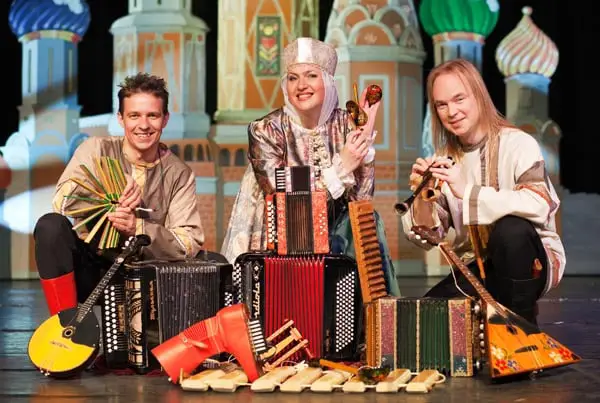Russian music has long permeated American popular culture even despite a backdrop of long-time political tension. Russian musical themes from poignant folk melodies to complex classical pieces have become tunes that nearly everyone who grew up in America can recognize as having heard before. Often, they are specifically associated with popular cartoons, video games, or movies.
“Flight of the Bumblebee,” for instance, is often employed for comedic effect. Conversely, the dark and brooding “Night on Bald Mountain,” has been strategically placed in horror films to heighten suspense.
The influence of Russian music extends even to American holiday traditions. Pyotr Ilyich Tchaikovsky, a revered Russian composer, penned the ballet The Nutcracker, which has become a cornerstone of American Christmas celebrations. The ubiquitous “Dance of the Sugar Plum Fairy” melody serves as a recognizable example of this cultural exchange.
Below, we take a deeper examination of Russian music within American popular culture. By recognizing thematic threads and with lots of examples to listen to and watch, we hope you’ll gain a richer understanding of how the creative process and the power of music can transcend cultural boundaries.
This resource was originally created by Jessica Berry in 2015.
It has since been updated several times to retain the integrity of the links, pictures, and videos.
Song of the Volga Boatmen
(Russian Folk)
“Song of the Volga Boatmen” is a traditional Russian song sung by the burlaks. Burlaks were landless or poor peasants who hauled barges and other vessels upstream from the seventeenth to the twentieth century. They were famously epitomized in a painting by Ilya Repin.
Mily Balakirev (1837-1910) collected the song when he took a trip along Russia’s Volga River in the summer of 1860 to document songs from the peasantry. He was one of the first Russian composers to go in search of folk songs. Balakirev collection of folk songs was published in 1866. In nineteenth-century romanticism, the folk song was “a reflection of the particular mystical characteristics of a people” and “was believed to be the clearest expression of the national character, a typical feature enshrined in every nation.”
Indeed, Balakirev would use Russian folk music to represent national character in his musical compositions and the “Song of the Volga Boatmen” would prove widely popular among Russian singers and composers. An early example was the use of “Song of the Volga Boatmen” in Alexander Glazunov’s (1865-1936) symphonic poem Stenka Razin, which was inspired by the Cossack Stenka Razin, who had led a revolt against the Russian nobility. It was premiered on November 23, 1885 in St. Petersburg.
The song gained in popularity through the efforts of the Feodor Chalyapin (1873-1938), a famous Russian opera singer. Chalyapin championed the song as a solo recital piece and, afterwards, it became a favorite solo piece among bass singers.
Perhaps not surprisingly, the song remained popular in the Soviet era. The Soviet Red Army Choir recorded a majestic – perhaps even joyous – version of this song of labor in 1965.
Paul Robeson (1898-1976) was an American singer and actor whose deep bass voice had helped make “Ol’ Man River” from the Broadway musical Showboat a national hit. He recorded a deeply traditional rendering of the song in Russian.
Robeson was also a civil rights leader and an unabashed pro-Soviet, American Communist. The song, however, proved to speak to those outside of proletarian-centered philosophies. The song reached number one on US charts in 1941 with Glenn Miller’s (1901-1944) catchy, finger-snapping jazz arrangement.
The song was also soon picked up and used for comic effect in the 1949 cartoon Goofy Gymnastics, obviously to reference slow, laborious movement. (The video below is dubbed into Swedish – this is the only freely available, functional version of this cartoon we could find.)
The song has continued to pop up in pop culture in more modern examples. In the 1990s, it was the introduction song for Soda Popinsky, the Soviet boxer in Mike Tyson’s Punch Out.
Several episodes of Sponge Bob (and numerous other comedic American productions) have also used short snippets of the song when referring to something stereotypically Russian or to hard labor.
Tell me more about Russian folk music!
Below are three recommended books to study this topic further!
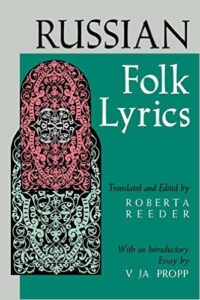 |
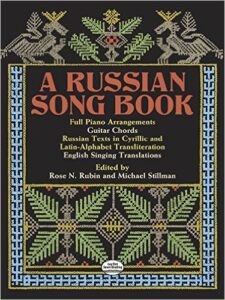 |
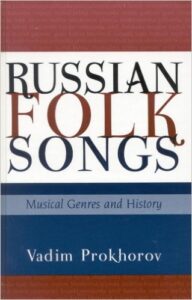
|
Flight of the Bumblebee
(Nikolai Rimsky-Korsakov)
“Flight of the Bumblebee” is a highly recognizable tune for most Americans, even for those who couldn’t name the work or the composer. Here’s the song, pictured with its composer, Nikolai Rimsky-Korsakov (1844-1908).
“Flight of the Bumblebee” was originally an orchestral interlude in the opera The Tale of Tsar Saltan, which was composed by Rimsky-Korsakov. The libretto was written by Vladimir Belsky and based on the 1831 fairy-tale poem of the same name by Alexander Pushkin (1799-1837). Belsky tried his best to borrow and emulate the style of Pushkin’s original poem and Rimsky-Korsakov composed the opera to celebrate the centennial of Pushkin’s birth. “Flight of the Bumblebee” is the musical interlude between Act III and Act IV. It represents Prince Gvidon Saltanovich, who was turned into a bee by a magical swan so that he could visit his father (Tsar Saltan). The Tale of Tsar Saltan premiered on November 23, 1900 in Moscow and was conducted by Mikhail Ippolitov-Ivanov. You can hear a full performance of the opera, performed in 1959, online.
One of the earliest and strongest showcasings of the song in American culture came in 1936, when The Green Hornet radio program premiered, using “Flight of the Bumblebee” as its theme music. You can hear many of those shows online. When The Green Hornet television series came out in the 1966, the same song was used, although in updated arrangement.
Bumble and the Stingers made a boogie-woogie piano version that reached number 21 on the US charts in 1961.
“Flight of the Bumblebee” has been arranged for a variety of solo instruments to highlight the virtuosity of a performer. In American pop culture, much of its popularity comes from its incredible energy and technical difficulty.
This can range from comic pieces that play on the challenge of the piece, such as this YouTube clip from the popular performers Player Piano:
Or, humor is sometimes taken by juxtaposing the technical difficulty and intricacy of the song with chaos, such as in this skit by The Muppets.
Or this clip from The Simpsons:
Tell me more about Nikolai Rimsky-Korsakov!
Below are recommended books to study this composer further!
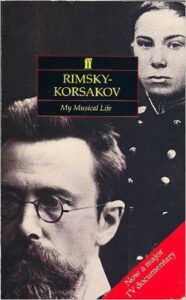
|
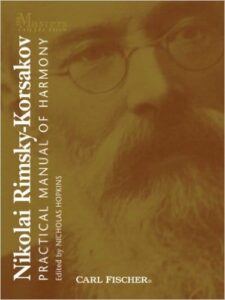
|
Night on Bald Mountain
(Modest Musorgsky)
The original concept to the music of Night on Bald Mountain was by the Russian composer Modest Musorgsky (1839-1881), who was inspired in writing it after reading Witchcraft and Mysterious Phenomena in Modern Times by Matvei Khotinsky, a history on demonology. Musorgsky did not complete his dark and foreboding tune, however, as it floated between larger works, being continually rewritten for each. None of these larger compositions, however, would be completed and performed before Musorgsky died.
The version of this song which is perhaps best known was edited and arranged by a contemporary Russian composer with whom Musorgsky was close: Nikolai Rimsky-Korsakov (1844-1908). It sounds like this:
Bald Mountain is based on Mount Triglav, a mountain near Kiev named after a three-headed god in Slavic mythology. Mount Triglav was the scene of the Walpurgis Night, which took place each year on the eve of the feast of John the Baptist. On Walpurgis Night, on the mountaintops, creatures of demonology (ghosts, witches, vampires, etc.) paid tribute to Satan. Peasants barred their doors and placed kettles in their windows to keep away evil spirits on this demonic night.
Musorgsky had three versions of this piece. The original was called “St. John’s Night on Bald Mountain” which he initially composed in only twelve days in June, 1867. Musorgsky included a program within the original symphonic poem:
- I: Assembly of the witches, their chatter and gossip
- II: Cortege of Satan (Satan’s journey)
- III: Unholy glorification of Satan (the “Black Mass”)
- IV: Witches’ Sabbath
This version, however, was not published until 1968 and is rarely heard in concert halls. It sounds like this:
The second version was arranged to be a part of an opera. The director of the Imperial Theaters, Stepan Gedeonov, asked members of the Russian musical circle known as the “Mighty Handful” to compose music for the opera, Mlada (1872). Musorgsky was asked to write the music for Act III, which called for a witches’ Sabbath. He rearranged the score of St. John’s Night on Bald Mountain by adding a chorus to the original orchestral score. The opera project failed and Musorgsky’s new arrangement was never performed.
Musorgsky’s choral arrangement, however, adds a certain extra spookiness. It sounds like this:
Musorgsky reworked the tune again for inclusion in The Fair at Sorochintsi, a comic opera in three acts that he began in 1874 and never finished. The libretto was written by Musorgsky and based on the short story with the same title by Nikolai Gogol (1809-1852). Gogol’s story does not include a witches’ Sabbath. Instead, music from St. John’s Night on Bald Mountain became an orchestral interlude between Act I and Act II and represented a nightmare had by the Peasant Lad. The opera was eventually completed with the help of other composers and librettists. A complete version of the opera can be heard on YouTube:
After Musorgsky’s death, Nikolai Rimsky-Korsakov completed and edited many of his compositions. He took Musorgsky’s third version of St. John’s Night on Bald Mountain and orchestrated it into a symphonic poem, giving it the title most commonly known as Night on Bald Mountain. This arrangement premiered on October 15, 1886 in St. Petersburg and was conducted by Rimsky-Korsakov himself. This version, as shown above, has become the standard version performed by orchestras around the world, and is a concert favorite among audiences.
In American culture, Night on Bald Mountain is perhaps best remembered as a dark part of Walt Disney’s Fantasia (1940). Leopold Stokowski (1882-1977), who conducted the Philadelphia Orchestra in this film, created his own arrangement for it, based on the Rimsky-Korsakov version and his knowledge of Musorgsky’s other work. Stokowski had conducted the US premiere of the original version of Musorgsky’s opera Boris Godunov in 1929. Stokowski’s version is rarely heard outside of Fantasia.
The music of Night on Bald Mountain gains in popularity around Halloween not only because it depicts a celebration of the Devil, but also the music is dark, chaotic, and the perfect music to represent that holiday. Because of these qualities, the music has also made its way into several video games, including Super Mario World and Kingdom Hearts to depict particularly gloomy or demonic scenes.
It’s even been used as an overly dramatic and scary introduction to the video for the Beastie Boy’s “Intergalatic,” as a giant alien space robot lands on Earth.
Tell me more about Modest Musorgsky!
Below are recommended books to study this composer further!
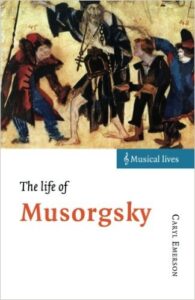
|
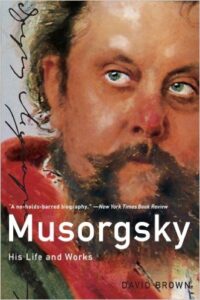
|
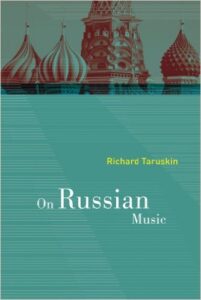
|
Works by Pyotr Ilyich Tchaikovsky
Works by Pyotr Ilyich Tchaikovsky (1840-1893) are some of the most recognizable and well-known Russian compositions in America. So many of works have been used in American popular culture that one cannot pin down just one – so here is an introduction to three of them.
In his symphonic poem Romeo and Juliet, Fantasy Overture, the love theme that represents the two lovers can be heard in films and television to highlight a romantic scene. It sounds like this:
Tchaikovsky was deeply inspired by the works of William Shakespeare (1564-1616) and this is one of three symphonic poems based on his works: The Tempest (1873) and Hamlet (1888). Mily Balakirev gave him the idea to write this piece and Tchaikovsky was influenced in his writing by Balakirev’s Overture to King Lear (1859). This symphonic poem went through three revisions, with the third and final revision being the piece that is commonly performed in concert halls today. In the third revision, Tchaikovsky reworked the ending and added the sub-title “Overture-Fantasia.” It was completed on September 10, 1880, but was premiered on May 1, 1886 in Tbilisi, Georgia and conducted by Mikhail Ippolitov-Ivanov.
You can see the wider Fantasy Overture, performed as part of the larger ballet Romeo and Juliet here (the Love Theme comes in at about 8:40):
Another of Tchaikovsky’s greatest hits, Overture sollennelle “1812”, Op. 49 is most famously heard during the Fourth of July holiday when America is celebrating its Independence Day. It is the perfect soundtrack to the ending of a firework show because of the fast tempo, brass fanfare, and the inclusion of canon fire within the piece. Here’s the piece as performed by the Boston Pops, with the US Army providing cannon fire, while American fireworks and patriotism explode in the background (and, later, foreground).
Nikolai Rubinstein (1835-1881), founder of the Moscow Conservatory, asked Tchaikovsky to write a piece commemorating several events. The first was to celebrate the completion of the Cathedral of Christ the Savior, which was commissioned by Tsar Alexander I (r. 1801-1825) in memoriam of the Russian victory over Napoleon in 1812. The second was the 25th anniversary of the coronation of Tsar Alexander II (r. 1855-1881). The third and final event was the opening of the Moscow Arts and Industry Exhibition. Tchaikovsky began work on this composition on October 12, 1880 and he finished it six weeks later. This symphonic poem depicts the conflict and the defeat of France in 1812 and features several nationalistic songs including the French National Anthem (La Marseillaise) and the Russian National Anthem (God Save the Tsar!). Due to the assassination of Alexander II in 1881, the piece was premiered in Moscow at the Arts and Industry Exhibition in 1882.
A full version of his work, with choral backup, can be heard here:
In addition to overtures and shorter pieces, Tchaikovsky completed three full ballets. His third and final ballet, The Nutcracker, is a staple in American culture around the holiday season. All over the country, both amateur and professional companies produce the ballet to celebrate the holiday. Several excerpts from the ballet are well known.
For example, the “Dance of the Sugar Plum Fairy:”
This is another piece that was immensely popularized by Disney’s Fantasia:
And also popularized by Nintendo in the 1980s:
Many other excerpts are also well known, for example, the Russian Dance:
This song became, in a slightly modified arrangement, a theme for Home Alone 2 (starting at about the 40 second mark):
The story of The Nutcracker is based on the story The Nutcracker and the Mice King by E.T.A. Hoffmann (1776-1822), which he wrote in 1816. With his two other ballets, Swan Lake (1876) and The Sleeping Beauty (1890), Tchaikovsky “made the ballet a serious music art form, instead of a mere divertissement.” The Nutcracker is a two-act ballet, which was originally choreographed by Marius Petipa and Lev Ivanov. The director of the Imperial Theaters, Ivan Vsevolozhsky, commissioned Tchaikovsky to write another ballet after the success of The Sleeping Beauty. It premiered at the Mariinsky Theater in St. Petersburg on December 18, 1892, alongside his opera Iolanta.
You can watch a full version of the Nutcracker, as performed by Russia’s famous Marinsky Theatre, online:
It is amazing how American culture can appreciate the music of the Russians, especially in the classical genre. Even today, both countries host musicians and performing companies in their own lands. Russian music permeates America and many of their orchestral pieces are popular among American audience. Small American cities with professional orchestras are known for playing music by Russian composers. The Tuscaloosa Symphony Orchestra, located Tuscaloosa, Alabama, in May 2015 put on a Russian Extravaganza Concert (which are not uncommon among American concert halls), which performed the rare choral versions of Musorgsky’s St. John’s Night on Bald Mountain and Tchaikovsky’s Overture sollennelle “1812.” Even when there is constant negativity about the political tension between the two nations, it is wonderful that they can welcome each other’s musical culture with much warmth.
Tell me more about Pyotr Ilyich Tchaikovsky!
Below are recommended books to study this composer further!

|
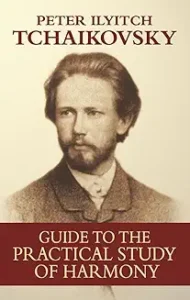
|
This resource was originally created by Jessica Berry in 2015.
It has since been updated several times to retain the integrity of the links, pictures, and videos.
You Might Also Like
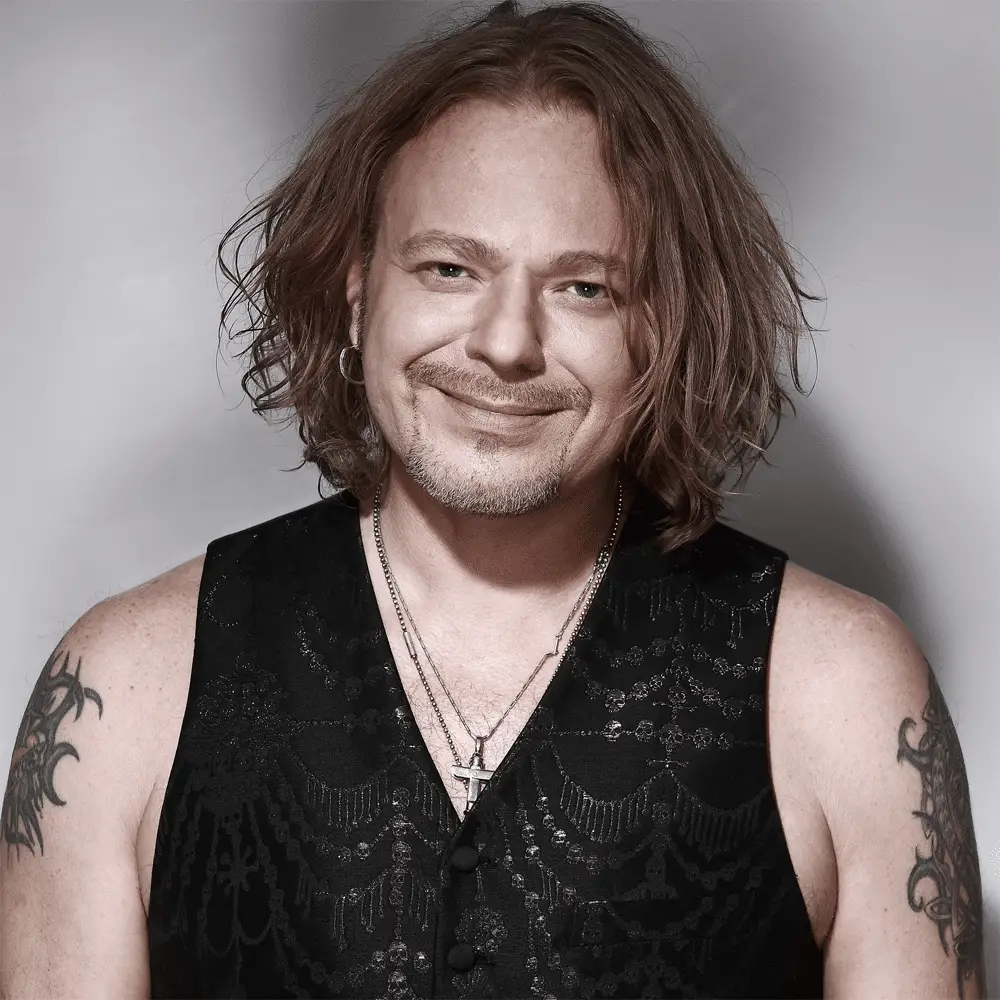
Vladimir Presnyakov / Владимир Пресняков
Vladimir Presnyakov (Владимир Пресняков) is a Russian singer from Yekaterinburg. He was exposed to music from a young age, since both of his parents were in the music industry. Presnyakov started playing around with the piano, guitar, and drums as a child, and started writing his own music when he was 11. He began singing […]

Tatyana Bulanova / Татьяна Буланова
Tatyana Bulanova (Татьяна Буланова) is a Russian singer from St. Petersburg. Growing up, Bulanova studied the piano in music school, and also began to play the guitar in her teens. For college, she originally enrolled in the library sciences department of the Leningrad Institute of Culture, but she soon moved to the vocal music department. […]

5 Bands Bringing Traditional Kazakh Style to Modern Rock
Here are five Kazakh bands working to bring traditional Kazakh instrumentation and musical styles into modern music. Roksonaki Seamless Kazakh Folk Rock Roksonaki is a Kazakh band that was formed in 2006. Its name means “lightning” in Kazakh, chosen to represent the band’s energetic and electrifying musical style. They are known for their unique fusion […]
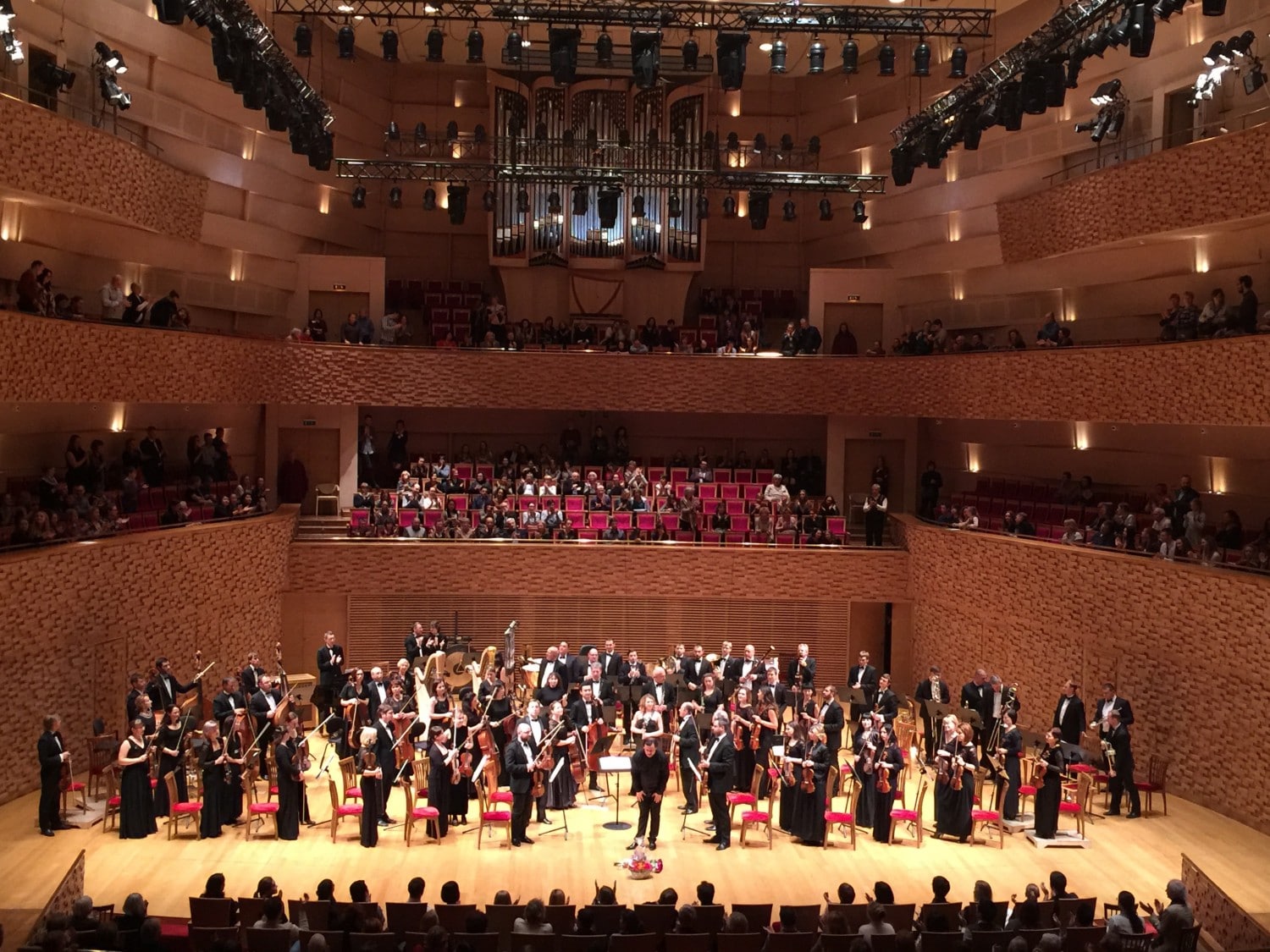
Russian Symphonies in St. Petersburg
The Russia School of Classical Music has greatly contributed to the genre of symphonic music. By the beginning of the 20th century, many Western composers were influenced by Russian music. Studying in St. Petersburg, I am glad that I have the opportunity to attend symphonic concerts that feature Russian composers. I have already seen several […]

Patrick the Pan
Patrick the Pan is a Polish soft rock band consisting of frontman Piotr Madej, Justyn Małodobry, Kuba Duda, and Adam Stępniowski. The band’s first album was composed, recorded, and performed entirely by Madej. Patrick the Pan’s music is soft and sad, as well as artfully composed. In Madej’s own words, their songs are “sad songs. […]


